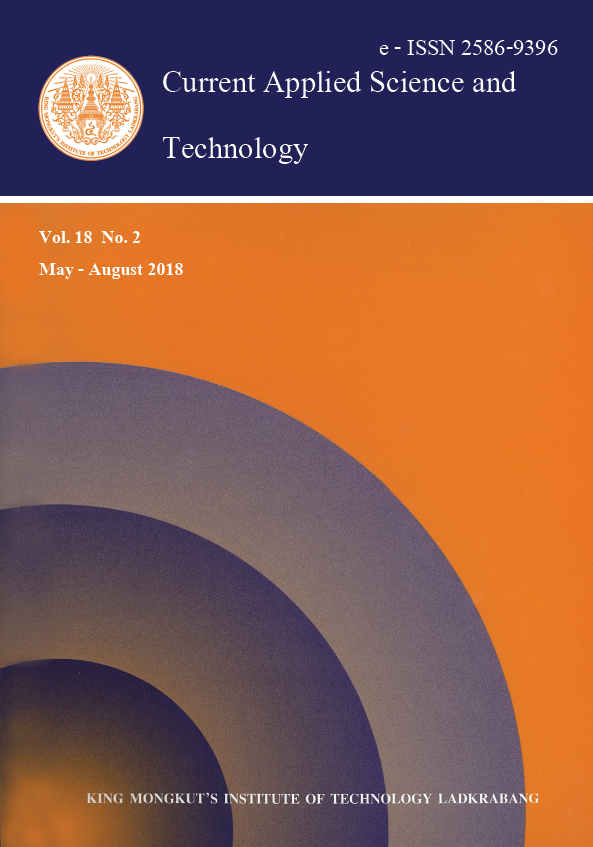A New Type of Dilute Magnetic Semiconductor: Saturation Magnetization Dependence on Level of Nonmagnetic Ion Doping
Main Article Content
Abstract
By definition, a dilute magnetic semiconductor is a II-IV or III-V semiconductor in which some of the nonmagnetic ions are replaced by magnetic ions. Defects due to Zn vacancies in ZnO nano particles (NP’s) can induce virtual magnetic moments in this semiconduct or making it a room temperature ferro magnet. The systematic changes in the magnetic behaviors of ZnO NP’s doped with non magnetic Al, Ag, Mg and Sb ions are observed. The changes are usually explained in terms of the increased stability of the zinc vacancies when the vacancies are a part of new impurity complexes formed when the impurity ions substitute for the zinc ions. In most cases, this explains the increases in the saturation magnetizations as more nonmagnetic impurities are substituted into the ZnO NP’s.
Keywords: ZnO nanoparticles, Zn vacancies, Virtual magnetic moments, Hysteresis Loops, DFT calculations.
*Corresponding author: E-mail: fscimt@ku.ac.th
Article Details
Copyright Transfer Statement
The copyright of this article is transferred to Current Applied Science and Technology journal with effect if and when the article is accepted for publication. The copyright transfer covers the exclusive right to reproduce and distribute the article, including reprints, translations, photographic reproductions, electronic form (offline, online) or any other reproductions of similar nature.
The author warrants that this contribution is original and that he/she has full power to make this grant. The author signs for and accepts responsibility for releasing this material on behalf of any and all co-authors.
Here is the link for download: Copyright transfer form.pdf
References
[2] Dietl, T., Ohno, H., Matsukura, F., Cibert, J. and Ferrand, D., 2000. Zener ModelDescription of Ferromagnetism in Zinc-Blende Magnetic Semiconductors. Science 287, 1019.
[3] Dietl, T. and Ohno, H., 2014.Dilute Ferromagnetic Semiconductors Physics and Spintronics Structures. Rev. Mod. Phys., 86, 187.
[4] Coey, J.M.D., Venkatesan, M. and Fitzgerald, C.B., 2005. Donor impurity exchange in dilute ferromagnetic oxides, Nature Materials 41, 173-179.
[5] Zutic, I., Fabian, J. and Das Sarma, S., 2004. Spintronics: Fundamentals and Applications, Rev. Mod. Phys.76, 323.
[6] Venkatesan, M., Fitzgerald, C.B. and Coey, J.M.D., 2004. Unexpected magnetism in a dielectric oxide. Nature, 430, 630.
[7] Sundaresan, A., Bhargavi, R., Rangarajan, N., Siddesh, U. and Rao, C.N.R., 2006. Ferromagnetism as a universal feature of nanoparticles of otherwise nonmagnetic oxides. Phys. Rev. B, 74, 161306.
[8] M. Venkatesan, M., C.B. Fitzgerald, C.B., J.G. Lunney, J.G., J.M.D. Coey, J.M.D., 2004. Anisotropic ferromagnetism in substituted zinc oxide. Phys. Rev. Lett. 93, 177206.
[9] Anghei, J., Thurber, A., Tenne, D.A., Hanna, C.B. and Punnoose, A., 2010. Correlation between saturation magnetization, bandgap and lattice volume of transition metal (M =Cr, Mn, Fe, Co or Ni) doped Zn1-xMxO nanoparticles. J. Appl. Phys. 107, 09E314.
[10] Hong, N.H., Sakai, J., Poirot, N. and Brize, V., 2006. Room-temperature ferromagnetism observed in undoped semiconducting and insulating oxide thin films. Phys. Re. B, 73, 132404.
[11] Rainey, K., Chess, J., Eixenberger, J., Tenne, D.A., Hanna, C.B. and Punnoose, A., 2014. Defect induced ferromagnetism in undopedZnO nanoparticles. J. Appl. Phys. 115, 17D727.
[12] Liu, W., Li, W., Hu, Z., Tang, Z. and Tang, X., 2011. Effect of oxygen defects on ferromagnetic of undopedZnO. J. Appl. Phys.,110, 013901
[13] Gao, D., Zhang, Z., Fu, J., Xu, Y., Qi, J. and Xue, D., 2009. Room temperature ferromagnetism in pure ZnO nanoparticles. J. Appl. Phys.105, 113928.
[14] Wang, Q.J., Wang, J.B., Zhong, X.L., Tan, Q.H., Hu, Z. and Zho, Y.C., 2012. Magnetism mechanism in ZnO and ZnO doped with nonmagnetic elements X (X = Li, Mg, and Al): A first-principles study. Appl. Phys. Lett. 100, 132407.
[15] Peng, H.W., Xiang, H.J., Wei, S.H., Li, S.S., Xia, J.B. and Li, J.B., 2009. Origin and enhancement of hole-induced ferromagnetism in first-row d0 semiconductors. Phys. Rev. Lett. 102, 017201.
[16] Lu, Y.B., Dai, Y., Guo, M., Yu, L. and Huang, B.B., 2013. Investigation of magnetic properties induced by Group V elements in doped AnO. Phys. Chem. Chem. Phys. 15, 5208.
[17] Limpijumnong, S., Zhang, S.B., Wei, S.H. and Park, C.H., 2004. Doping by large size mismatched impurities: The microscopic origin of arsenic or antimony doped zinc oxide. Phys. Rev. Lett. 15, 155504.
[18] Tian, S., Zeng, D., Xie, C. and Zhao, X., 2014. Direct experimental evidence for SbZn + 2VZn complex as the important defect in the Sb-doped ZnO nanocrystals, Material Letters, 116, 363.
[19] Nakarungsee, P., Chen, G.S., Herng, T.S., Ding, J., Tang, I.M. and Talabthong, Thongmee, S., 2016. Sb substitution into ZnOnano-compoisite: Ferromangetic behavior. JMMM, 397, 79.
[20] Robkhob,P., Herng, T.S., Dingm J., Tang, I.M. and Thongmee, S., 2017. Magnetic behavior of ZnOnanorods doped with silver (Ag3+) ions.J. Nanosci. & Nanotech, 17, 5631.
[21] Yingsamphancharoen, T., Nakarungsee, P., Herng, T.S., Ding, J. and Tang. I.M., 2016. Ferromagnetic behavior due to Al3+ doping into ZnO nanorods. JMMM, 419, 274.


